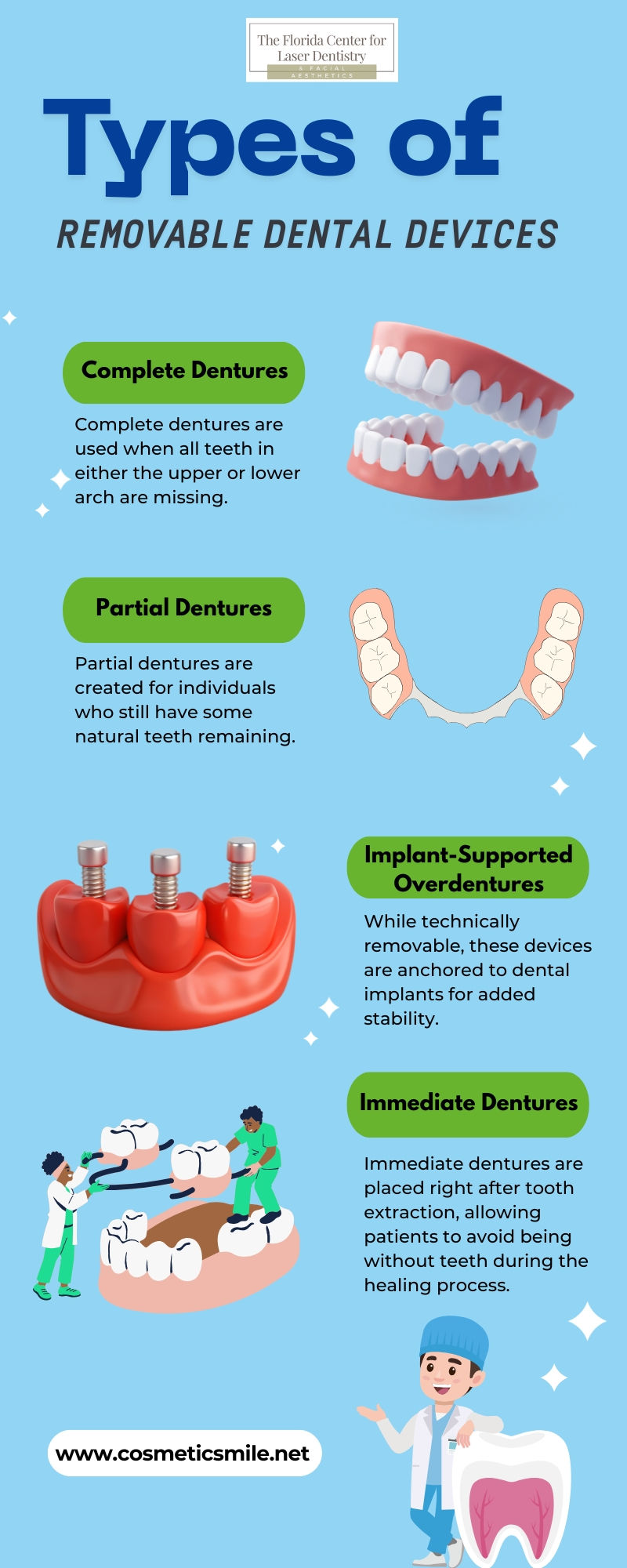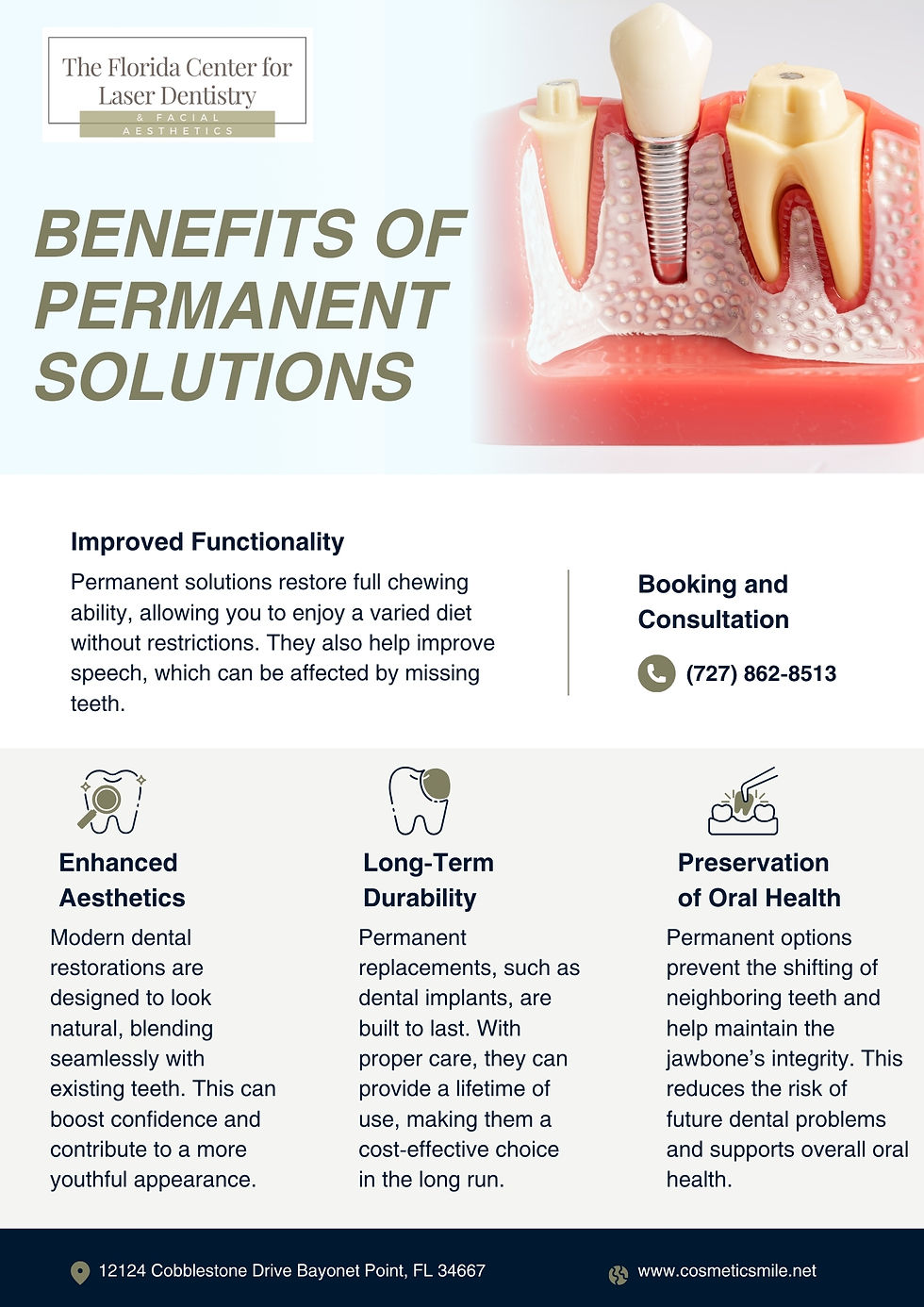Understanding Tooth Extractions and What to Expect
- Cosmetic Smile
- Feb 12, 2025
- 3 min read
Tooth extractions are a common dental procedure that many people may need at some point in their lives. Whether due to decay, injury, or overcrowding, removing a tooth can be essential for maintaining oral health. While the idea of having a tooth removed might seem daunting, understanding the process and what to expect can help ease any concerns.
Why Might You Need a Tooth Extraction?
There are several reasons why a dentist might recommend removing a tooth. Some of the most common include:
Severe Tooth Decay: When a tooth is extensively decayed and cannot be restored with a filling or crown, extraction may be the best option to prevent further damage.
Gum Disease: Advanced periodontal disease can loosen teeth, making extraction necessary to preserve overall oral health.
Impacted Teeth: Wisdom teeth often become impacted, meaning they don’t fully emerge from the gums. This can lead to pain, infection, or misalignment of other teeth.
Overcrowding: In some cases, removing a tooth is necessary to create space for orthodontic treatment.
Trauma or Injury: Teeth that are severely damaged due to an accident may need to be extracted if they cannot be repaired.

Tooth Extractions
The Tooth Extraction Process
The process of removing a tooth is straightforward and is typically performed under local anesthesia to ensure comfort. Here’s what you can expect:
Consultation and Examination: Your dentist will first examine your tooth and take X-rays to assess the situation. This helps determine the best approach for the extraction.
Anesthesia: Local anesthesia is administered to numb the area around the tooth. For more complex cases, sedation options may be available.
Extraction: Using specialized tools, the dentist will gently loosen the tooth and remove it from the socket. In some cases, a small incision may be needed to access the tooth.
Aftercare: Once the tooth is removed, the dentist will provide instructions for post-procedure care to promote healing and prevent complications.
Types of Tooth Extractions
There are two main types of tooth extractions:
Simple Extraction: This is performed on teeth that are visible in the mouth. The dentist uses an instrument called an elevator to loosen the tooth and forceps to remove it.
Surgical Extraction: This is required for teeth that are not easily accessible, such as impacted wisdom teeth. A small incision is made in the gum to remove the tooth.
What to Expect After the Procedure
Recovery from a tooth extraction is usually quick, but it’s important to follow your dentist’s instructions to ensure proper healing. Here are some tips for a smooth recovery:
Rest: Avoid strenuous activities for at least 24 hours after the procedure.
Ice Packs: Applying an ice pack to the outside of your cheek can help reduce swelling.
Soft Foods: Stick to soft foods like yogurt, soup, and mashed potatoes for the first few days.
Oral Hygiene: Gently rinse your mouth with warm salt water after 24 hours to keep the area clean. Avoid brushing near the extraction site for the first few days.
Pain Management: Over-the-counter pain relievers can help manage any discomfort.
Potential Complications
While tooth extractions are generally safe, there are some potential complications to be aware of:
Dry Socket: This occurs when the blood clot at the extraction site is dislodged, exposing the bone and nerves. It can be painful but is treatable.
Infection: Proper aftercare is essential to prevent infection. Signs include fever, swelling, and pus.
Bleeding: Some bleeding is normal, but if it persists, contact your dentist.
When to Seek Help
If you experience severe pain, excessive bleeding, or signs of infection after a tooth extraction, it’s important to contact your dentist immediately. These could be signs of complications that need prompt attention.
Alternatives to Tooth Extractions
In some cases, alternatives to removing a tooth may be available. For example, root canal therapy can save a severely decayed tooth, and orthodontic treatments can address overcrowding without extraction. Always discuss your options with your dentist to determine the best course of action.
Tooth extractions are a routine dental procedure that can significantly improve your oral health when necessary. By understanding the process, following aftercare instructions, and staying informed about potential complications, you can ensure a smooth and successful recovery. If you have concerns or questions about tooth extractions, consult with a trusted dental professional.
For expert care and advanced dental solutions, consider visiting The Florida Center for Laser Dentistry.




Comments